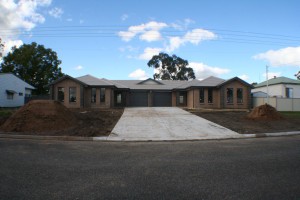I had a call this week from a chap who was weighing up whether he should develop property or just go out and buy some new properties. I explained that buying existing property is like buying at full retail prices or perhaps at sale prices if you are lucky.
Property development can encompass many activities including renovating an existing dwelling or building, demolition of buildings and/or building new and subdividing or changing the use of land.
By developing property you are adding value and will be creating or manufacturing equity through the development process rather than waiting for capital growth as you do when you purchase an existing dwelling. Most the towns we develop in are growing at an annualized rate of over 10%.
If you plan well and time your development so that you are adding value and manufacturing equity whilst the market is in an upswing, then you could make some good money as you’ll also benefit from the capital growth during the period you are developing, but if your timing and/or location is wrong and your plan is to sell on completion, then you may find it hard to sell or your margin has diminished if values are dropping.
Developing property can be risky and not for everyone, there are many things that can go wrong so it is important to really do your due diligence and understand the many facets involved.
Tip 1.
- Community profiles – who lives in the area?
-
Population estimates – very important to see if the area is growing
-
Migration figures – where is the community coming from?
-
Working population breakdown – is it mainly a retiree area or does it have a large working community, you will obviously be looking for the later for a strong rental market
-
An overview on the Economic Development of its community – what is planned for the future?
-
Recent development approvals will be listed so you can see what type of developments are currently being approved
-
Tourism – how much does the area rely on tourism as an industry?
-
Infrastructure investment/planning – very important, make sure there is considerable investment being made here
-
Development Control Plans (DCP) and Local Environment Plan (LEP). Find the one that gives guidelines on the type of development you are planning to do, for instance and there should be a separate DCP for dual occupancy development, which is building an additional dwelling on land that would normally house just one.
-
Long Term Strategic Plans – this is a really important document to read as it will show housing & employment needs for the future and pinpoint the areas earmarked for growth
- - How long their average DA takes to process?
- - Are they open to new development in the area?
- - What is the minimum lot size?
- - How many dwelling can you build on this particular lot and ask if they can see any issues that may


